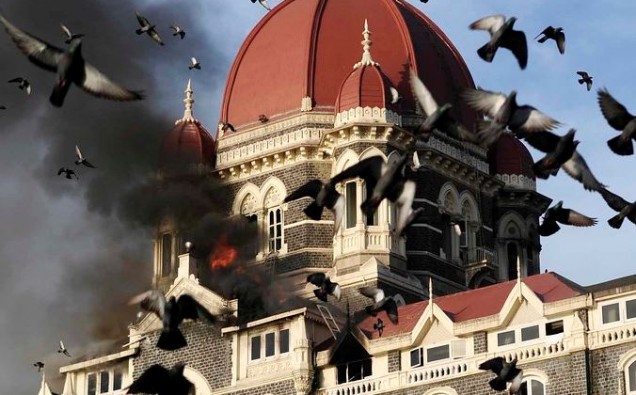Saeed Anwar gets ran out by Tendulkar, after making 194 runs
Pakistani legendary player Saeed Anwar created history on this day in 1997 when he scored 194 runs against India at the Chepauk Stadium in Chennai. Anwar’s 194 runs exceeded Sir Vivian Richards’ total of 189, which he had scored against England in 1984. He made 22 boundaries and fives sixes and also had to ask Shahid Afridi to run for him.
After 146 balls and playing for 206 minutes, Anwar closed in making 200 runs. Nevertheless, Sachin Tendulkar stepped up and got him out, when he was six runs short from making a second century. Zimbabwe’s Charles Coventry equalled Anwar’s achievement of 194 runs, but he stayed undefeated against Bangladesh on 16th August 2009. Pakistan went on and won the match by 35 runs, despite Rahul Dravid making a century. A year later, on February 4th, 2010, Tendulkar himself managed to break the 200 run record in One Day International, against South Africa at the Captain Roop Singh Stadium in Gwalior.
What comes as a shock to everyone is that the ‘master-blaster’ isn’t the first individual to score a double hundred in the ODI. Australia’s player Belinda Clark a year on from Anwar’s 194 runs, became the first to break the record of scoring above 200. On December 16, 1997, Clarke broke the record of an unbeaten 229 just off by 155 balls against unlucky Denmark in a Women’s World Cup game at the MIG Ground in Mumbai.
Manchester Ship Canal
Manchester itself was expanding quickly, and by the 1830s it was known as the most significant industrial city in the world. As well as mills, there were also many engineers to construct and ensure the smooth running of such buildings. There was a lot of general manufacturing as well as a large proportion of the chemical industry that went hand in hand with the bleaching companies needed for the city’s cotton supply. Therefore, by the 1870s, in spite of building of the world’s first inter-city railway, the Liverpool/Manchester Railway routes were stretched to breaking point and so was Manchester’s ascendancy as a manufacturing hub.
However, it was cheaper to send ships to Hull on the other side of the country and transport it. In 1882, Manufacturer Daniel Adamson made a plan suggested back in the 1660s to build a waterway, which would be stretched from the Mersey estuary right into the City of Manchester, big enough to take the ships to carry the shipment. The project required to be passed through legislation in the Parliament. It was rejected twice, due to complaints from Liverpool, who feared to lose the income from the taxes that were currently charged.
However, in May 1885 the legislation was passed as the Manchester Ship Canal Act. As a condition that the newly formed company had to raise £8million as a means of shared wealth. This was achieved, and two years later, in 1887, the turf was cut. The route was 36 miles long, and it was divided into eight sections each with its chief engineer. Queen Victoria arrived on May 21st to publicly cut the ribbon, and the Port of Manchester became the third busiest in the UK in a short span of time, in spite of being nearly forty miles from the sea.
Riots in Ceylon Sri Lanka
In the year 1958, riots occurred in Ceylon, also known as the 58 riots, which were first island-wide ethnic riots that targeted the minority Sri Lankan Tamils in Ceylon after it became an independent country from Britain in 1948. The riots lasted from May 22 until May 27, 1958. Irregular disturbances even happened after the declaration of an emergency on June 1. The event was termed as an ethnic riot, but in some locations in its scale of its destruction, it was a massacre. The estimates of the murders which occurred ranged from between 70 to 300 killings.
Although most of the victims were Sri Lankan Tamils, some people and their property were also affected by attacking Sinhalese mobs that provided safe homes to Tamils as well. There were ‘tit-for-tat attacks’ by Tamil mobs in Batticaloa and Jaffna as well
In 1956, Solomon Bandaranaike came in power, on a Sinhala nationalist platform. The new government approved the Sinhala Only Act, by making Sinhala the sole official language of the country. This was despite the fact, nearly a quarter of the population used Tamil as their primary language. The Act immediately triggered dissatisfaction among the Tamils, who perceived their language, culture, and financial position as being subject to an increasing threat.
In the protest, Tamil Federal Party politicians launched a satyagraha (Nonviolent resistance) campaign. This led to a situation which increased the current tensions and the deaths of 150 Tamils in the Gal Oya riots in the east of the country. Finally, Bandaranaike entered into negotiations with them, and the Federal party agreed to the Bandaranaike-Chelvanayakam. This pact solicited the birth of a series of regional councils in the country as an entryway to giving autonomy to the Tamil people of present-day Sri Lanka.
Tauseef Asif













